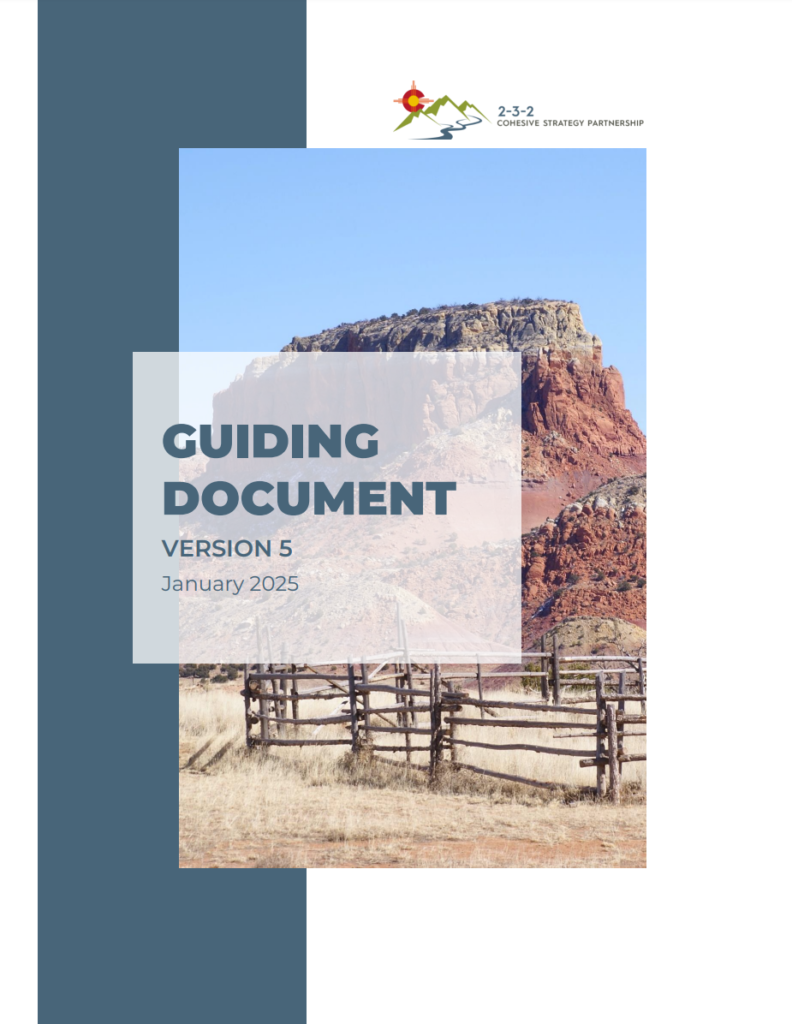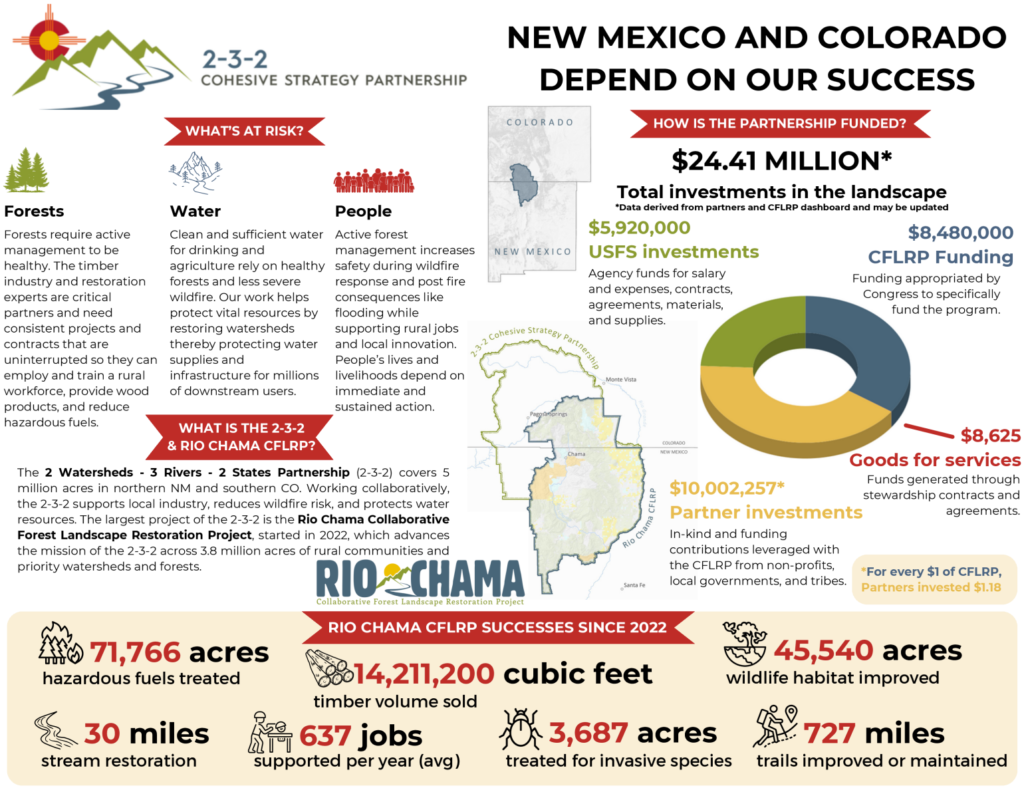Vision
Working collaboratively across all lands, agencies, and organizations, the 2-3-2 Partnership will coordinate efforts to reestablish natural fire regimes, promote resilient landscapes that protect and improve water and other natural resources for humans, wildlife, and plants, and support the economic and cultural resilience of communities within and connected to the 2-3-2 landscape.
Mission
By regularly convening diverse partners, promoting coordinated and collaborative planning, and supporting and elevating local efforts, the 2-3-2 Partnership aims to facilitate cooperation and information-sharing between organizations working toward watershed and landscape resilience in southern Colorado and northern New Mexico. Partners of the 2-3-2 are committed to integrating science and Indigenous knowledge to inform management strategies that support and enhance wildlife, aquatic health, and human communities alongside resilient forests and healthy watersheds.
2-3-2 Guiding Document
Read our foundational document, just updated through a collaborative process in January 2025. The 2-3-2 Executive Committee spent most of 2024 reviewing and revising the Guiding Documents to create a strong collaborative framework in order to navigate the inevitable challenges and opportunities ahead.
2-3-2 Fact Sheet
Working together we will cross public/ private lands, state and federal agencies to:
Develop resilient landscapes and communities that can co-exist with fire
Prepare our communities and landscapes for changes
Build resilient water resources and economies
Nurture and promote community engagement
Elevate and expand the work of established local efforts
Work collaboratively across public and private lands with the support of state, federal, and tribal entities and established collaborative groups
We collaborate across boundaries to:
Develop smoother operations and responses to ecosystem changes
Promote forest health across public/private boundaries
Secure resilient water resources
Incorporate best available science into land management practices
Support regional needs (planning)
Promote public education & support
Work to restore Fish and Wildlife habitat linkages
Together, we will:
Establish a learning network for the sharing and transfer of knowledge
Implement coordinated forest health treatment activities
Develop cross-jurisdictional policy for prescribed fire and wildfire management
Support/ promote regional outlets for product utilization
Host events to inform the public & garner support
Increase capacity by sharing personnel and resources to support on-the- ground projects
Leverage funds for ongoing projects


